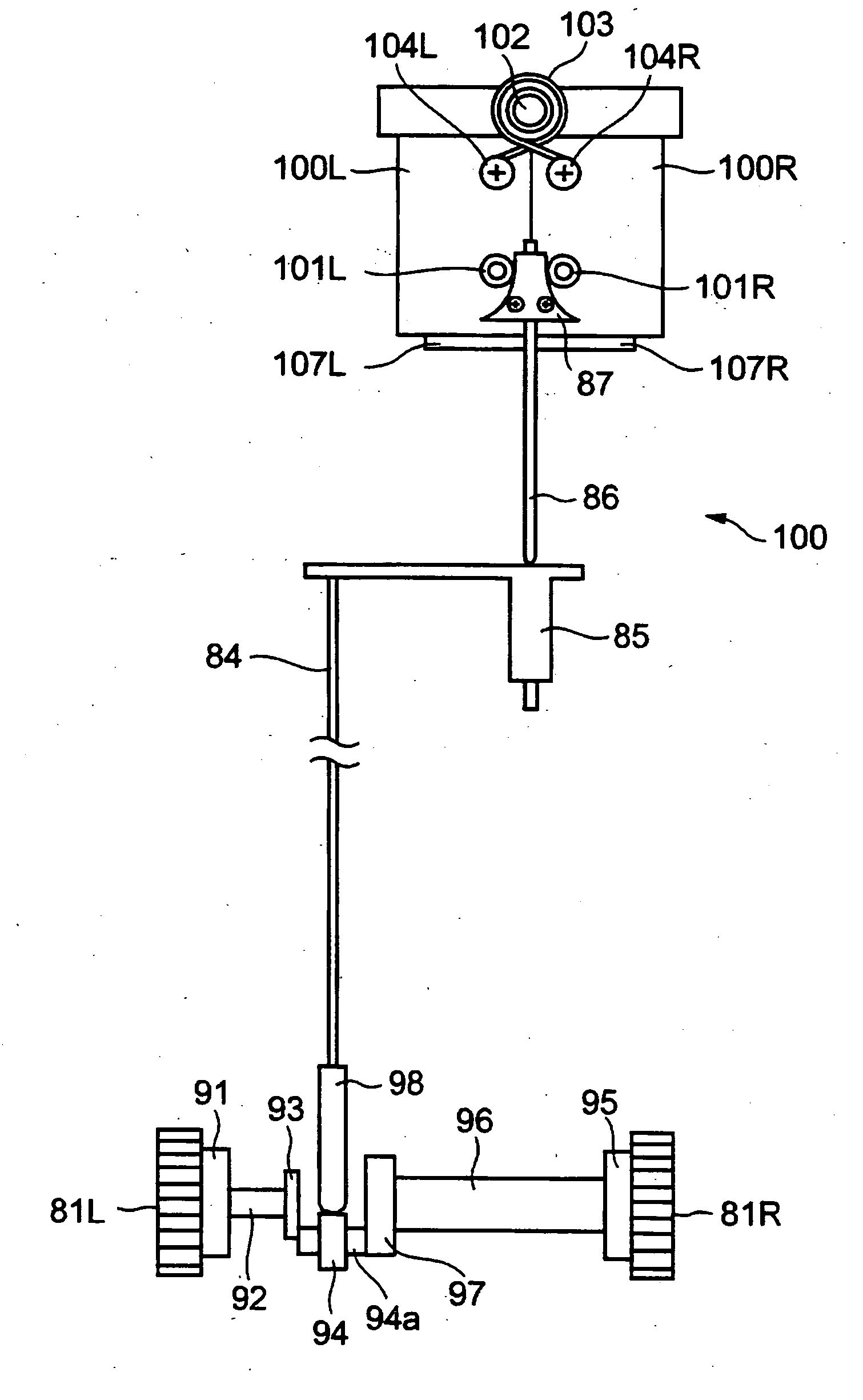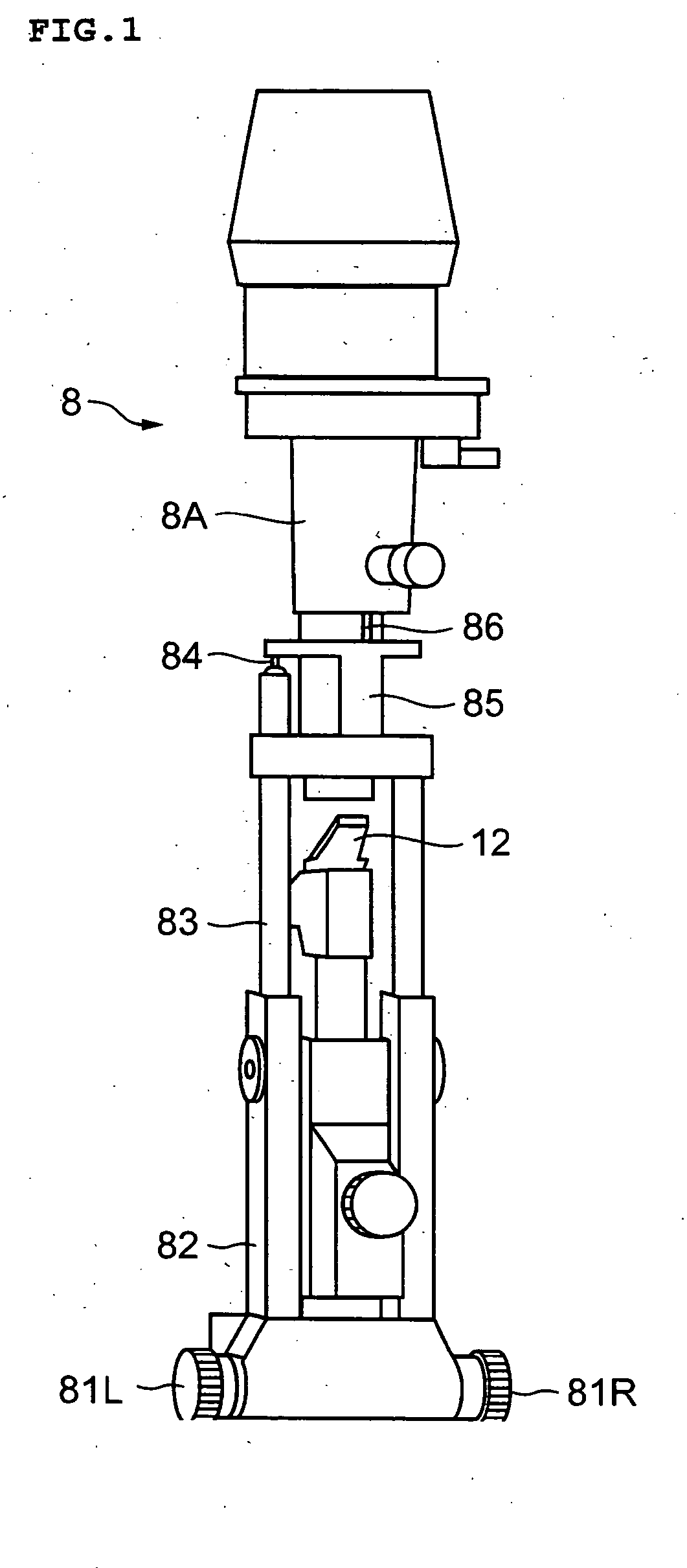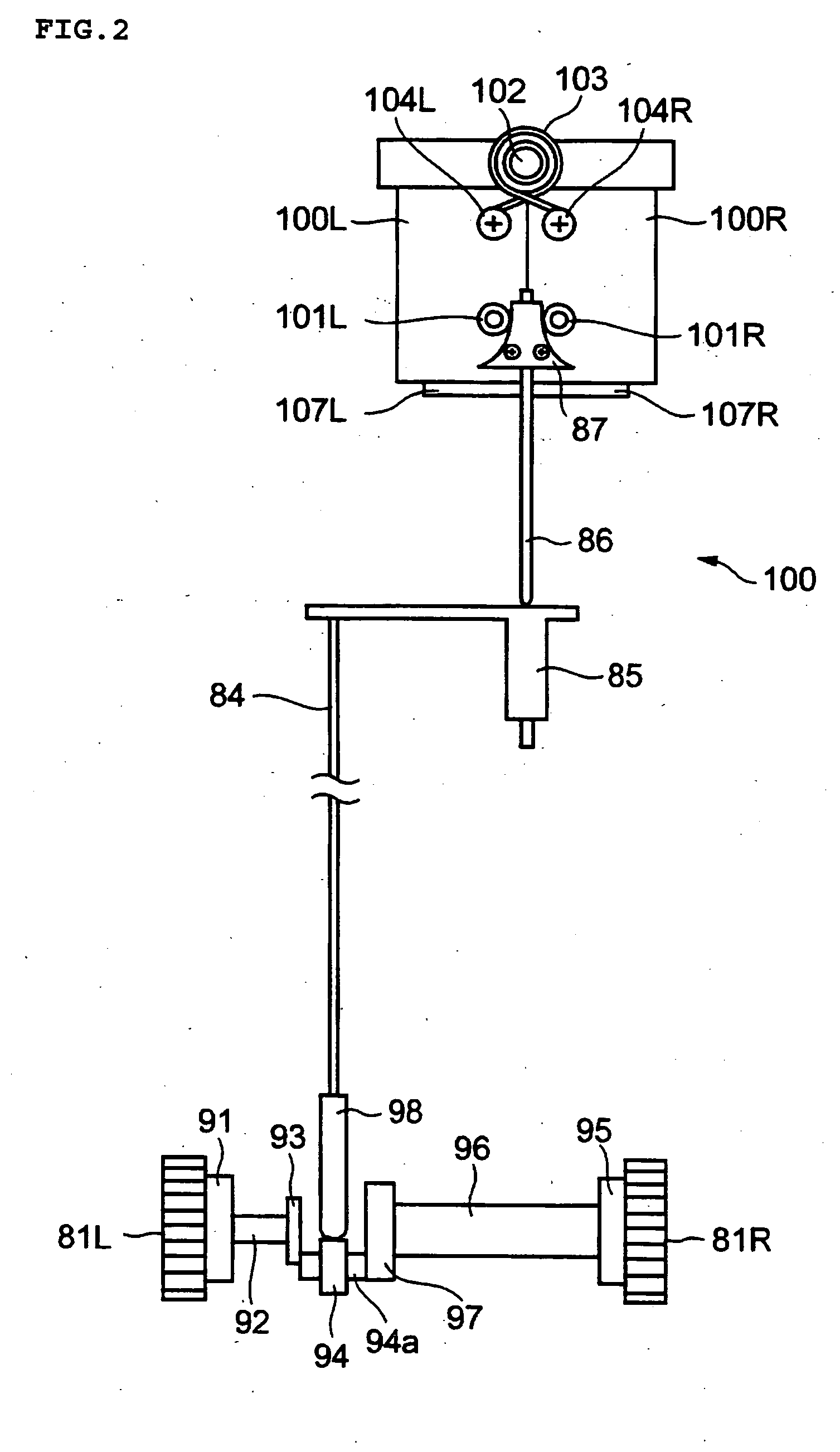Slit lamp microscope
a technology slit lamp light, which is applied in the field of slit lamp microscope, can solve the problems of deteriorating slit width accuracy, increasing inspection time, and affecting so as to improve the parallelism of the slit, improve the accuracy of slit light, and improve the effect of slit width
- Summary
- Abstract
- Description
- Claims
- Application Information
AI Technical Summary
Benefits of technology
Problems solved by technology
Method used
Image
Examples
Embodiment Construction
[0051] A slit lamp microscope according to an embodiment of the present invention will be described in detail with reference to the drawings.
[0052] The slit lamp microscope of this embodiment has an external construction and an optical configuration (in particular, an observation system 6 and an illumination system 8) similar to those of the above-described conventional slit lamp microscope (see FIGS. 8 and 9). Further, this slit lamp microscope has a slit forming means substantially the same as that in the prior art (see FIGS. 10 and 11). In the following, the components that are the same as those of the conventional slit lamp microscope are indicated by the same reference numerals.
[0053] Here, the term slit forming means refers to a structure including a pair of slit blades constituting the pair of slit forming members as used in the present invention and a slit width changing means changing the slit width by changing the distance between the pair of slit blades. The term slit w...
PUM
 Login to View More
Login to View More Abstract
Description
Claims
Application Information
 Login to View More
Login to View More - R&D
- Intellectual Property
- Life Sciences
- Materials
- Tech Scout
- Unparalleled Data Quality
- Higher Quality Content
- 60% Fewer Hallucinations
Browse by: Latest US Patents, China's latest patents, Technical Efficacy Thesaurus, Application Domain, Technology Topic, Popular Technical Reports.
© 2025 PatSnap. All rights reserved.Legal|Privacy policy|Modern Slavery Act Transparency Statement|Sitemap|About US| Contact US: help@patsnap.com



